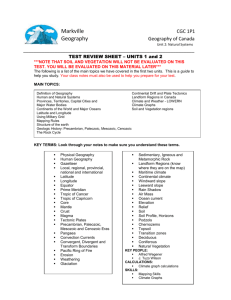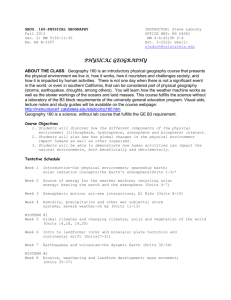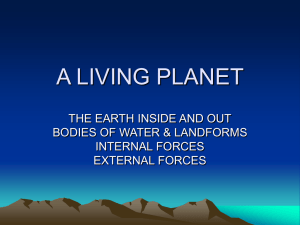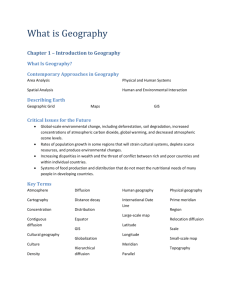162 KB
advertisement
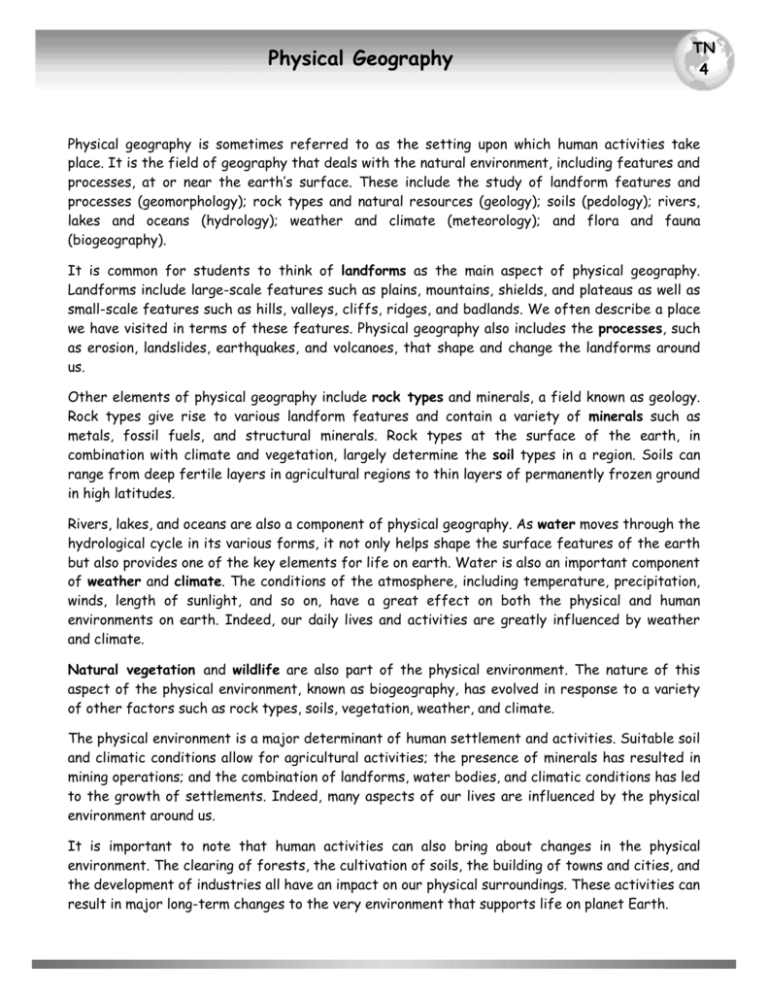
Antiti Physical Geography TN 4 Physical geography is sometimes referred to as the setting upon which human activities take place. It is the field of geography that deals with the natural environment, including features and processes, at or near the earth’s surface. These include the study of landform features and processes (geomorphology); rock types and natural resources (geology); soils (pedology); rivers, lakes and oceans (hydrology); weather and climate (meteorology); and flora and fauna (biogeography). It is common for students to think of landforms as the main aspect of physical geography. Landforms include large-scale features such as plains, mountains, shields, and plateaus as well as small-scale features such as hills, valleys, cliffs, ridges, and badlands. We often describe a place we have visited in terms of these features. Physical geography also includes the processes, such as erosion, landslides, earthquakes, and volcanoes, that shape and change the landforms around us. Other elements of physical geography include rock types and minerals, a field known as geology. Rock types give rise to various landform features and contain a variety of minerals such as metals, fossil fuels, and structural minerals. Rock types at the surface of the earth, in combination with climate and vegetation, largely determine the soil types in a region. Soils can range from deep fertile layers in agricultural regions to thin layers of permanently frozen ground in high latitudes. Rivers, lakes, and oceans are also a component of physical geography. As water moves through the hydrological cycle in its various forms, it not only helps shape the surface features of the earth but also provides one of the key elements for life on earth. Water is also an important component of weather and climate. The conditions of the atmosphere, including temperature, precipitation, winds, length of sunlight, and so on, have a great effect on both the physical and human environments on earth. Indeed, our daily lives and activities are greatly influenced by weather and climate. Natural vegetation and wildlife are also part of the physical environment. The nature of this aspect of the physical environment, known as biogeography, has evolved in response to a variety of other factors such as rock types, soils, vegetation, weather, and climate. The physical environment is a major determinant of human settlement and activities. Suitable soil and climatic conditions allow for agricultural activities; the presence of minerals has resulted in mining operations; and the combination of landforms, water bodies, and climatic conditions has led to the growth of settlements. Indeed, many aspects of our lives are influenced by the physical environment around us. It is important to note that human activities can also bring about changes in the physical environment. The clearing of forests, the cultivation of soils, the building of towns and cities, and the development of industries all have an impact on our physical surroundings. These activities can result in major long-term changes to the very environment that supports life on planet Earth.




